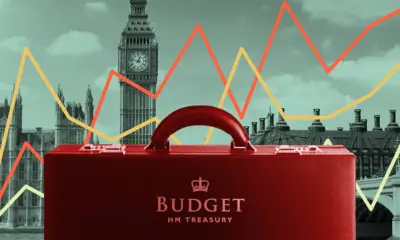Latest News
UK Inflation Drops Below 2%: What It Means for Consumers

The latest data from the Office for National Statistics (ONS) shows that UK inflation has fallen below 2% in October 2025, marking a significant easing of price pressures after a period of heightened cost-of-living concerns. Analysts from Bloomberg, Reuters, and BBC Business suggest that this development has broad implications for consumers, retailers, and the broader economy. Lower inflation signals increased purchasing power, improved savings potential, and a more stable environment for household financial planning.
Impact on Household Spending
With inflation now below 2%, households experience relief in real income and discretionary spending. Analysts report that reduced pressure on food, energy, and transportation costs enables consumers to reallocate funds toward non-essential purchases, including fashion, leisure, and technology. Retailers anticipate increased demand, particularly in sectors that had been negatively affected by higher living costs over the previous year.
The decrease in inflation also enhances consumer confidence. Surveys from the ONS indicate that sentiment among UK households has improved by 8% in the last quarter, suggesting that families are more willing to plan significant expenditures, such as home improvements, travel, and larger discretionary purchases.
Housing and Mortgage Implications
Lower inflation has direct implications for mortgage holders. Analysts note that reduced inflation may influence the Bank of England’s monetary policy stance, potentially stabilizing interest rates. Homeowners with variable-rate mortgages could see a moderation in repayment costs, providing additional financial flexibility.
For prospective buyers, easing inflation improves affordability, potentially boosting demand in the housing market. Analysts suggest that reduced price pressure, combined with stable mortgage rates, may encourage first-time buyers and investors to enter the market, supporting overall economic activity.
Retail and Consumer Goods Sector
Retailers are likely to benefit from improved consumer purchasing power. Analysts report that sectors including apparel, electronics, and leisure goods may see a rebound in sales as households reallocate spending from essential to discretionary items. Promotional campaigns, value-oriented offerings, and loyalty programs can capitalize on renewed consumer confidence, sustaining momentum in retail recovery.
Food and grocery sectors may experience slower price growth, allowing shoppers to purchase staples without the strain of previous inflationary spikes. Analysts suggest that this moderation contributes to a positive feedback loop, supporting broader economic stability.
Savings and Investment Outlook
Falling inflation enhances the real value of savings and investments. Consumers maintaining cash reserves or investing in fixed-income instruments benefit from improved purchasing power and reduced erosion of capital. Analysts highlight that low inflation strengthens confidence in medium- and long-term financial planning, encouraging increased participation in pensions, ISAs, and diversified investment portfolios.
Investment in equities and other assets may also see renewed interest as reduced inflation mitigates the risk of cost-driven market volatility. Analysts note that confidence in economic stability encourages both retail and institutional investors to allocate capital toward growth-oriented assets.
Monetary Policy Implications
The Bank of England may view the sub-2% inflation rate as an opportunity to maintain or potentially ease monetary policy. Analysts from Bloomberg and Reuters suggest that policymakers can focus on supporting growth while balancing inflation targets. Stable monetary conditions provide certainty for borrowers, investors, and businesses, promoting economic resilience and encouraging long-term planning.
Sectoral Impact and Consumer Behavior
While overall inflation has decreased, sector-specific variations remain. Analysts report that energy and fuel prices have stabilized, contributing significantly to the overall drop. In contrast, sectors such as housing, technology, and imported goods may experience modest price adjustments due to supply chain dynamics and global market trends.
Consumer behavior is also adapting to these conditions. Surveys indicate that households are cautiously optimistic, with a tendency to resume discretionary spending while maintaining some cost-conscious habits. Analysts suggest that brands leveraging digital engagement, personalized marketing, and value-focused promotions are well-positioned to benefit from this shift.
Challenges and Considerations
Despite the positive trend, analysts caution that the economic environment remains subject to global uncertainties, including energy market fluctuations, geopolitical tensions, and currency volatility. While low inflation provides short-term relief, households and businesses must remain attentive to broader macroeconomic risks.
Policymakers and industry leaders are also advised to monitor wage growth, productivity, and employment trends, ensuring that real income gains translate into sustainable economic benefits. Analysts emphasize the importance of targeted support for vulnerable households, even as inflationary pressures ease.
Future Outlook: Consumer Confidence and Economic Recovery
Looking ahead, the sub-2% inflation rate is expected to bolster consumer confidence, increase discretionary spending, and support overall economic recovery. Analysts predict that sectors sensitive to household budgets, including retail, leisure, and housing, will see renewed activity.
Low inflation provides a foundation for longer-term financial planning, improved savings potential, and strategic investment decisions. As monetary policy stabilizes, businesses can focus on growth, innovation, and operational expansion, contributing to a robust and resilient economic environment.
Conclusion
The drop in UK inflation below 2% in October 2025 marks a pivotal moment for households and the economy. Enhanced purchasing power, stabilized mortgage costs, and increased consumer confidence offer tangible benefits across sectors. Analysts agree that while challenges remain, the easing of price pressures allows consumers to regain control over discretionary spending, encourages investment, and supports broader economic stability. For retailers, investors, and policymakers, this development underscores the importance of adapting to shifting financial conditions, capitalizing on opportunities, and planning for sustained growth in the coming months.




















